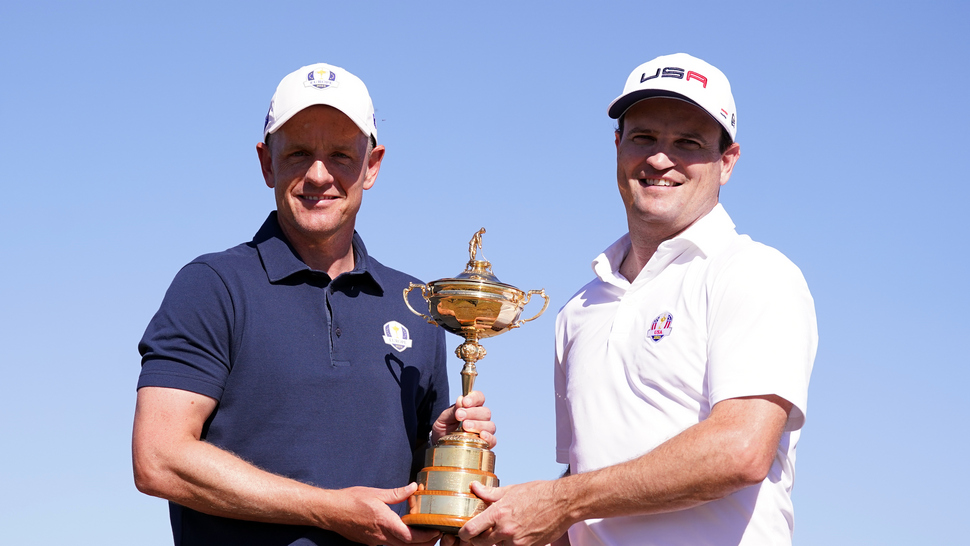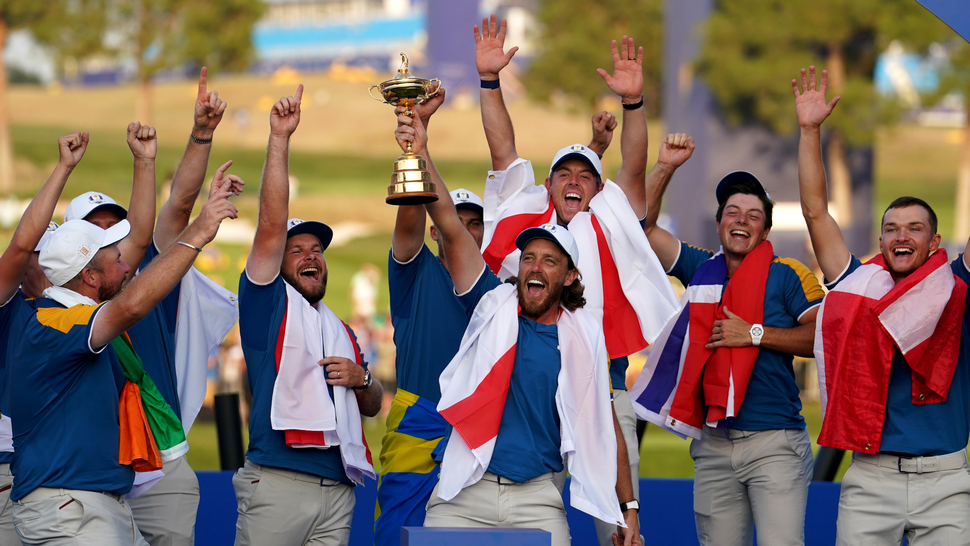When the U.S. team won by ten points in the 2021 Ryder Cup match there was much written about how the page had been turned and that the American squad would finally come to Europe two year’s time and end the drought on winning on the opponent’s soil since 1993.
Guess what?
The Americans will need to wait till 2027 when the event is played for the second time in Ireland to end a streak that is becoming heavier and heavier to overcome.
U.S. simply failed to produce
Europe’s six-point win in Rome came about beyond the usual outplaying the U.S. Undoubtedly, the top three players from Europe — Jon Rahm, Rory McIlroy and Viktor Hovland put together a collective record of 9-1-3 with McIlroy scoring four out of five points.
Contrast that to the top three U.S. players based on the world rankings in Scottie Scheffler, Patrick Cantlay and Xander Schauffele who finished together with a pitiful total of just 3-7-2. Amazingly, the world ranking number 1 Scheffler did not score a single victory and one of the losses came with teammate Brooks Koepka when they lost by an embarrassing record margin of 9&7 in foursomes play on Saturday.
The matches started ominously when Hovland holed a chip shot at the very 1st hole of his foursome match on Friday morning.
Europe consistently executed at notable points to keep constant pressure on the U.S. squad.
After losing all four of the first day foursomes matches, the U.S. mounted a comeback in the afternoon fourballs but three of the four matches that reached the final hole had the U.S. in a superior position to possibly cut the margin to a very manageable 5-3 lead for Europe. In each of the final hole matches Europe made sterling plays with Hovland sinking a 32-foot birdie putt to halve the match. Rahm came to the final hole and made an eagle putt to halve his match. To cap matters off Justin Rose dropped a 9-foot birdie putt to secure another halve when defeat looked likely. What could have been a 5-3 Europe lead was now a more daunting 6 ½ to 1 ½ cushion.

Europe better coached and prepared
Credit Luke Donald in having his entire team ready for action when the matches started.
Most notably, Donald opted to start the festivities with foursomes play and the sweep by the Europeans was far more than just being outplayed. U.S. captain opted to place the team of Scheffler and Sam Burns in the opening match and the record of the duo from having been paired the year prior in the Presidents Cup event was hardly noteworthy. Johnson then followed up with two Ryder Cup rookies in Max Homa and Brian Harmon. That match ended at the 15th. Next up was Rickie Fowler and Collin Morikawa. They were defeated by a margin of 2&1. In the final match the top duo of Patrick Cantlay and Xander Schauffele were knocked off by McIlroy and Tommy Fleetwood by a score of 2&1.
Johnson gave stoic responses that the U.S. situation was hardly dire and that his side would regroup and be ready to play on the second day of the competition. Matters did not get better and when the 12 singles matches happened on the final day the U.S. was in need of a miracle befitting the resurrection of Jesus.
Donald benefited from superior play from his key stars but he smartly paired veteran Ryder Cup players with rookies so that the nervousness that accompanies such situations would not be as paralyzing.
Johnson, on the other hand, had a number of his players who clearly were not in form. For the bulk of the U.S. squad the last competitive golf played had come in the Tour Championship played in the first week in September. Only Justin Thomas, Brooks Koepka and Max Homa had played just prior to the matches in Rome.
In contrast, all of the European players had played and made the cut at the BMW Championship one week prior to the Ryder Cup. In that event at Wentworth, 7 players from the European team made the top ten.
In response to this the need for Johnson to reshuffle his players given the lack of form from a number of them was clearly evident.

Familiarity mattered
Just as it happened at Gleneagles in Scotland in 2014, then Paris in 2018 and last week with Marco Simone, the European team was well familiar with the host site.
Johnson had brought the U.S. team to Rome about two weeks prior to the matches but the inability to understand thoroughly the nuances of Marco Simone was plainly evident in a number of botched golf shots down the stretch costing valuable points for the U.S. which was seeking to build momentum heading into the single matches.
Europe smartly prepped the host layout to have its share of high grass off the narrowed fairway and the putting surfaces were also prepared for a slower pace than what many on the U.S. side play during regular PGA Tour events.

Emotional emptiness
The European team played with a far higher emotional fire in the belly. The home crowd stroked that fervor at various times and the building crescendo often put off a number of U.S. players having to play from deficits which they were unable to overcome.
The lone emotional surge came during the afternoon fourball match involving Cantlay and Wyndham Clark against McIlroy and Matthew Fitzpatrick. Cantlay sunk big-time pressure putts on the final three holes — the last coming at the 18th from 43 feet. He and Clark then watched as McIlroy and Fitzpatrick, failing to sink putts each had from closer range.
After Cantlay’s long-range putt fell into the hole the celebration from Cantlay and his caddie Joe LaCava became a matter of contention for McIlroy. During the match European partisans had been sarcastically taunting Cantlay for his desire to play matches without wearing the customary golf cap with the U.S logo. News sources had said Cantlay was doing so to protect the lack of direct compensation for those playing in the event. Cantlay refuted that contention and said he did not don a cap because none fitted him properly and he had not worn one previously.
LaCava extended the celebration by walking near enough the putting line of McIlroy which the Ulsterman thought was meant to rattle him before attempting to make his putt to square the match. The emotions that had been simmering went into full meltdown mode as McIlroy and LaCava jawed at one another upon leaving the green.
What might have been a rallying moment for the U.S. was then the fueling agent for the European team to spark their play in the following day’s single matches.

Captain’s picks
The U.S. and European teams each had six spots reserved for players who performed well during the assessment period. The key for each side would be in getting production from the six captain’s picks each had to make.
In this area — Europe was 7-6-4 and the U.S. was 6-11-5.
So much of the fanfare had been pushed on the selection of Justin Thomas given his woeful playing record in 2023. The two-time major champion showed quality play at various times and was often the victim in having a partner in Jordan Spieth whose play was completely non-existent.
